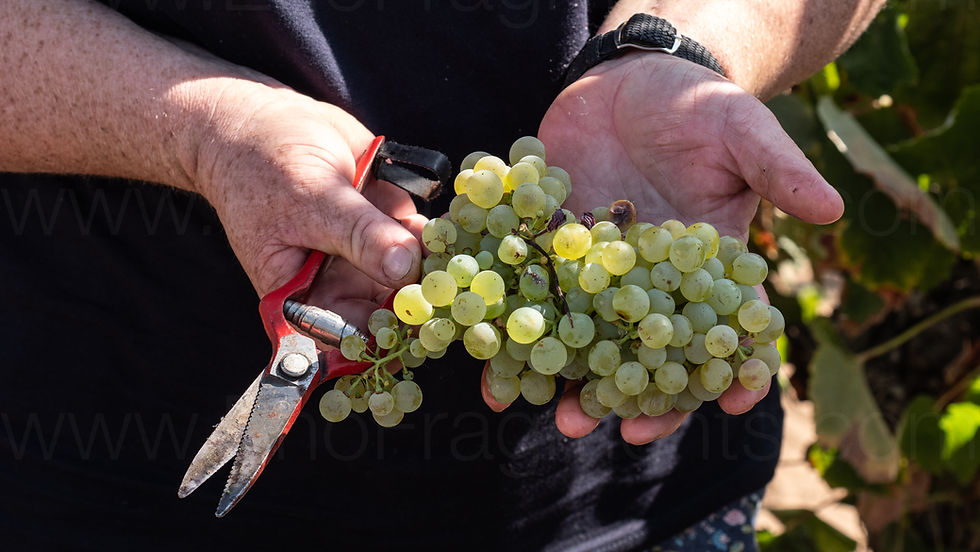With 13700 hectares, the grape Fernão Pires is the most planted white variety in Portugal. It is found in almost all Portuguese wine regions, but it is in the flatness of the Tejo wine region where it has the largest cultivation area, with 4,000 hectares out of a total of 12,500 hectares.

Fernão Pires appreciates the sea breeze and proves to be essential to the regions with Atlantic influence such as Beira Atlantico (21.5%), where it is also called Maria Gomes, Lisbon (10.5%), and the Setúbal Peninsula (9.4%), the regions just behind the Tagus in area of cultivation of the grape variety.

Fernāo Pires is a very old, Portuguese autochthonous variety, already mentioned since 1788 because it has great agronomic potential. The variety initiates the vegetative cycle earlier, it has strong adaptability to soils and climate, as well as adjusts well to the absence of water and to the existence of water. It is productive, which makes it pleasing to the farmer. Wine makers also love its versatility as one can produce still wines from light to full-body, with and without oak, it's a good base for sparkling wines, and it can even produce high-quality late harvests wines!

Amazingly, the good production capacity does not compromise quality. When worked with criteria, production control, (4 to 5 tons per hectare) the variety reflects the difference in terroir, and the interpretation of who makes them, leading to top of the range wines with good aging capacity.
It is one of the most aromatic white grape varieties in Portugal due to the abundance of aromatic compounds (terpenes, linalool, nerol, geraniol), which makes it a very effective and regular component in a blend, contributing strongly to the aromatic profile of the wine where it is present.
Another characteristic is that it is not known as a grape with high acidity, so this role is usually attributed to the Arinto grape variety in blends.
Contemporary tastes and the issue of climate change have led to new strategies. In this context, the most important change is the harvest date. In the past, the vintage was marked by the calendar. One would always pick the grapes on the day pre-defined by regional habits. Today, there is a change in mentality and the new rule is to harvest Fernão Pires according to the acidity level, and even resorting to night harvesting to preserve freshness.

In the wines produced with this grape, very citrusy aromas such as lime, lemon, tangerine and orange, orange blossom are common. Herbs and rose with a slight vegetal component are also trademarks. If harvested earlier we would recognize greener aromas, like asparagus, common in Sauvignon Blanc. If the grape is riper, the tropical aromas will be quite identifiable. Interestingly, the aromatic variation is related not only to the ripeness at the time of harvest, but also to the alcoholic degree.
Perhaps it's time to change the attitude towards Fernāo Pires, and embrace without prejudice the many flavors and styles of wines it can produce.

Manuel Moreira recommends:

Σχόλια